1.3. Relational Integrity Constraints¶
1.3.1. What Is Meant By Constraints?¶
Are conditions that must hold on all valid relation instances. These conditions maintain database correctness by preventing errors and inconsistencies.
1.3.2. Advantage of Using Integrity Constraints¶
1- They ensure the accuracy of data by preventing invalid data from being entered into the database.
2- They maintain the consistency of data by ensuring that data is consistent across different tables and fields.
These advantages lead to a reliable database design.
1.3.3. Types of Integrity Constraints¶
There are four main types of integrity constraints:
1• Key constraints.
2• Entity Integrity Constraints.
3• Refrential Integrity Constraints.
4• Semantic Integrity Constraints.
This section illustrates each type in details.
1.3.3.1. Key Constraints (Super key, Candidate key, Primary key, Secondary Foreign key, Surrogate key)¶
1- These are called uniqueness constraints since it ensures that every tuple in the relation should be unique.
2- A relation can have multiple keys or candidate keys (minimal superkeys), out of which we choose one of the keys as primary key, we don’t have any restriction on choosing the primary key out of candidate keys, but it is suggested to go with the candidate key with less number of attributes. All different key types are illustrated in the below table, followed by diagrams representing each type.
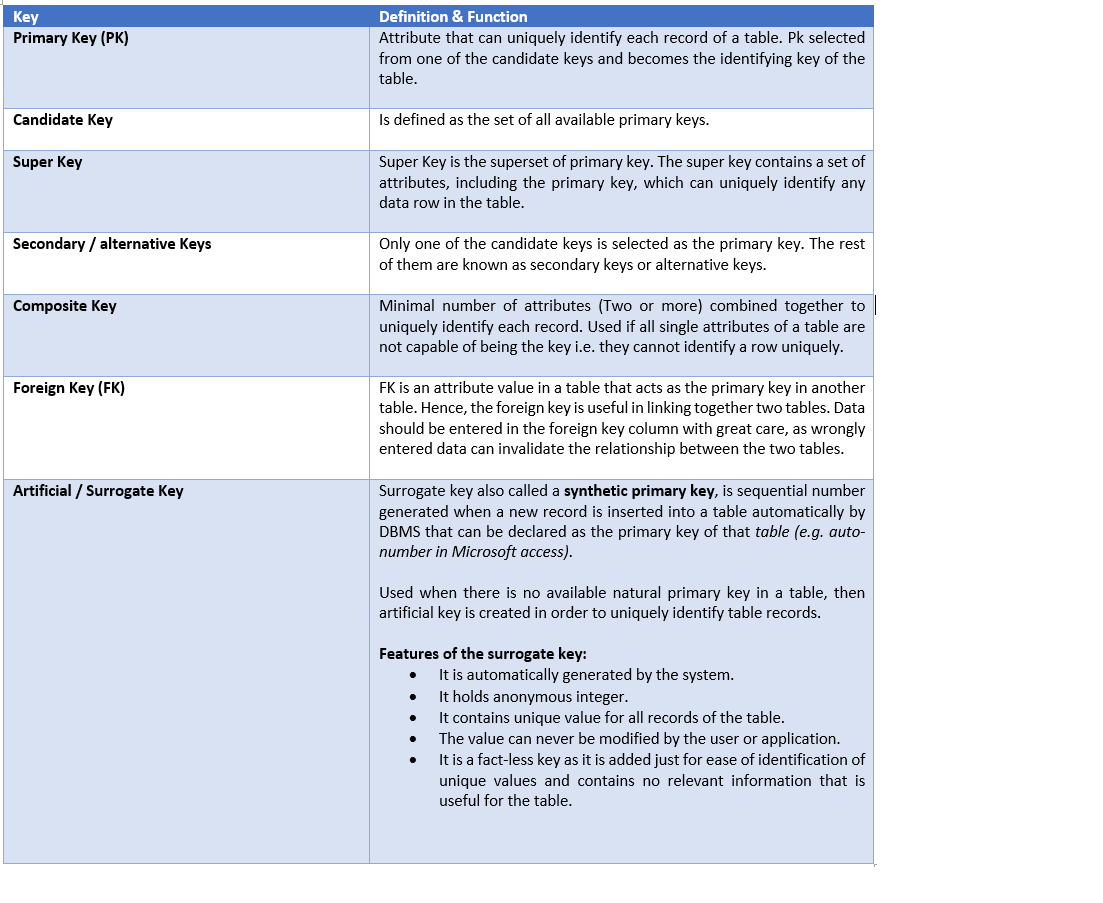
Examples to explain different key types:
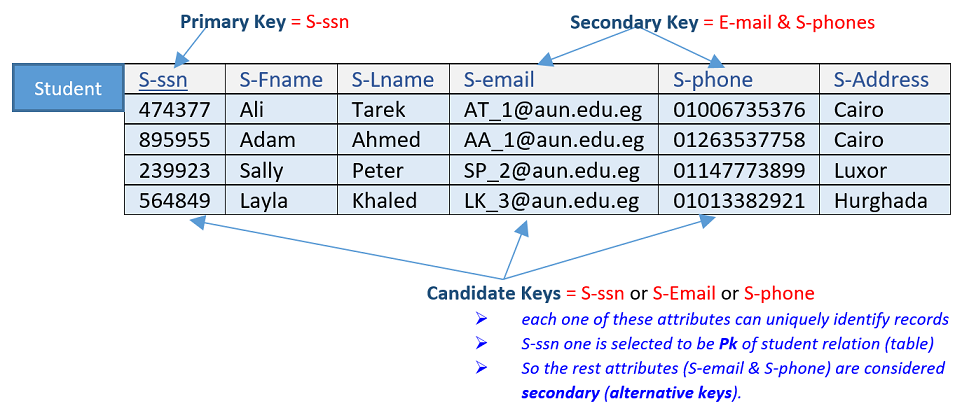

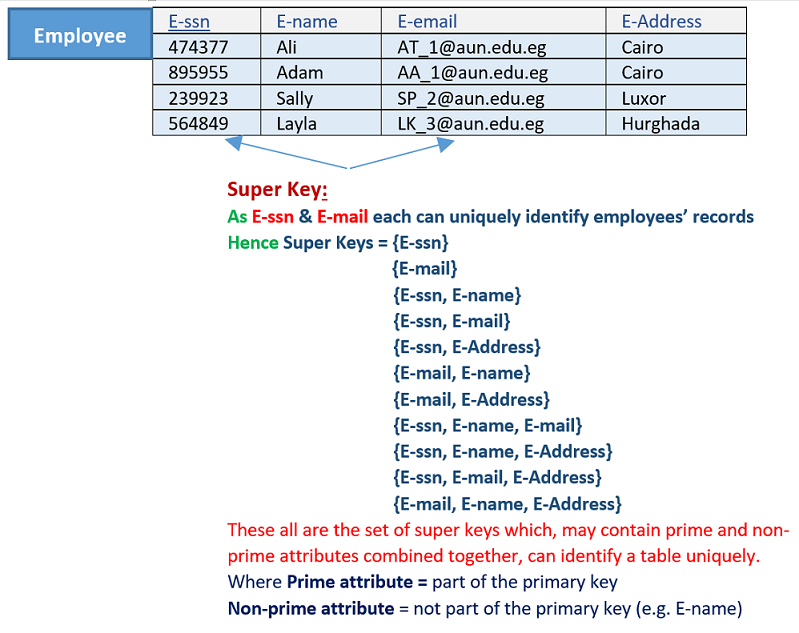

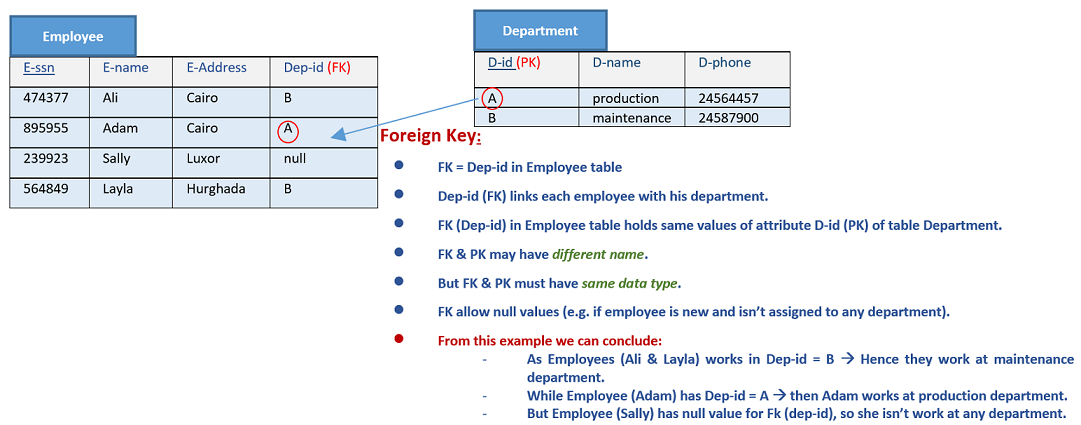
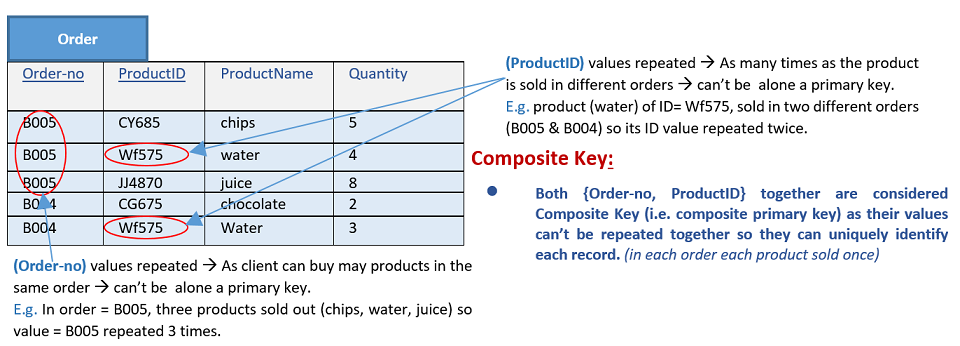
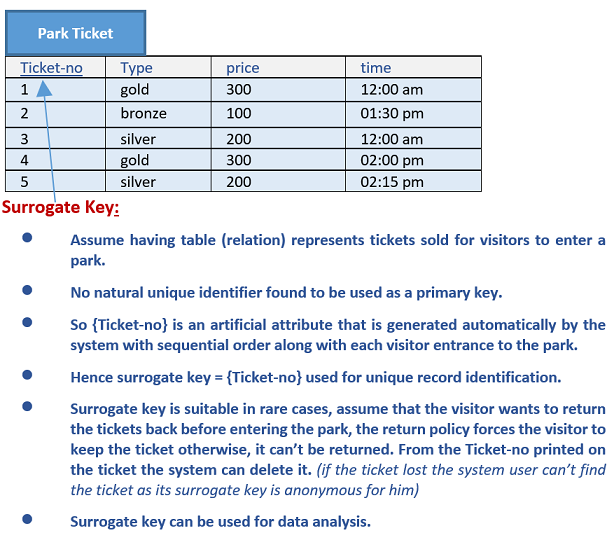
1.3.3.2. Entity Integrity Constraints¶
1- The entity integrity constraint states that: for each relation (i.e. entity in real world, e.g. student entity in faculty database) primary key value can’t be null or can’t be repeated. This is because the primary key value is used to identify individual rows in relation and if the primary key has a null or repeated value, then it can’t be used to identify those rows.
2- Entity Integrity Constraints is applied per single entity (relation) , each entity should have a primary key.
Note: Other attributes in any relation (table) may also be constrained to disallow null values, even though they are not members of the primary key. (e.g. student name in student table can’t be null but table may have more that one student with the same name).
1.3.3.3. Referential Integrity Constraints¶
1- The Referential integrity constraints is specified between two relations/tables (not on single relation as in case of entity integrity constraint) and used to maintain the consistency among the tuples in two relations.
2- This constraint is enforced through foreign key, when an attribute in the foreign key of relation R1 (tabel1) have the same domain(s) (domain: set of values for the attribute) as the primary key of relation R2 (table 2), then the foreign key of R1 is said to references or refers to the primary key of relation R2.
3- The values of the foreign key in a tuple of relation R1 can either take the primary key values for any tuple in relation R2, or can take NULL values, but can’t be empty.
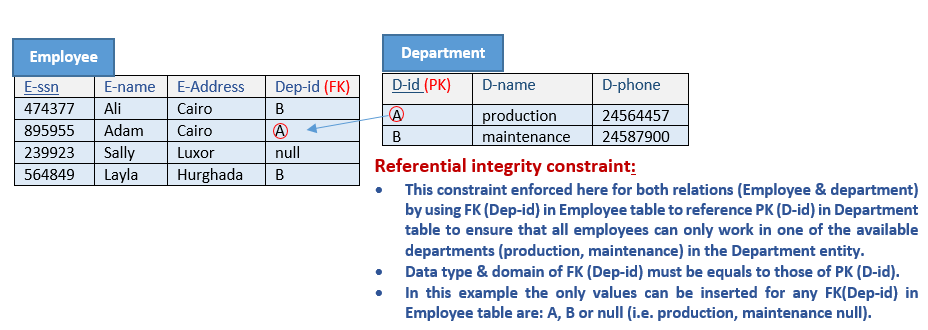
Note: Referential integrity constraints must be maintained in all relational operations (database transactions).
Appropriate specific actions should be taken if any opration tries to violate theses constraints. those actions will be discussed later in this chapter.
1.3.3.4. Semantic Integrity Constraints¶
1- Known as domain constraint which is the information that is associated with the domains of the attributes or data items. These constraints consist of physical translation of the business rules that apply to the content of the data item.
2- It defines the domain or the set of values for an attribute and ensures that the value taken by the attribute must be an atomic value(Can’t be divided) from its domain (e.g. NULL , Check).
3- This type of constraints based on application semantics and can’t be expressed by the model.
4- For Example: the maximum number of hours/month allowed for each employee to work is 85 hours.


